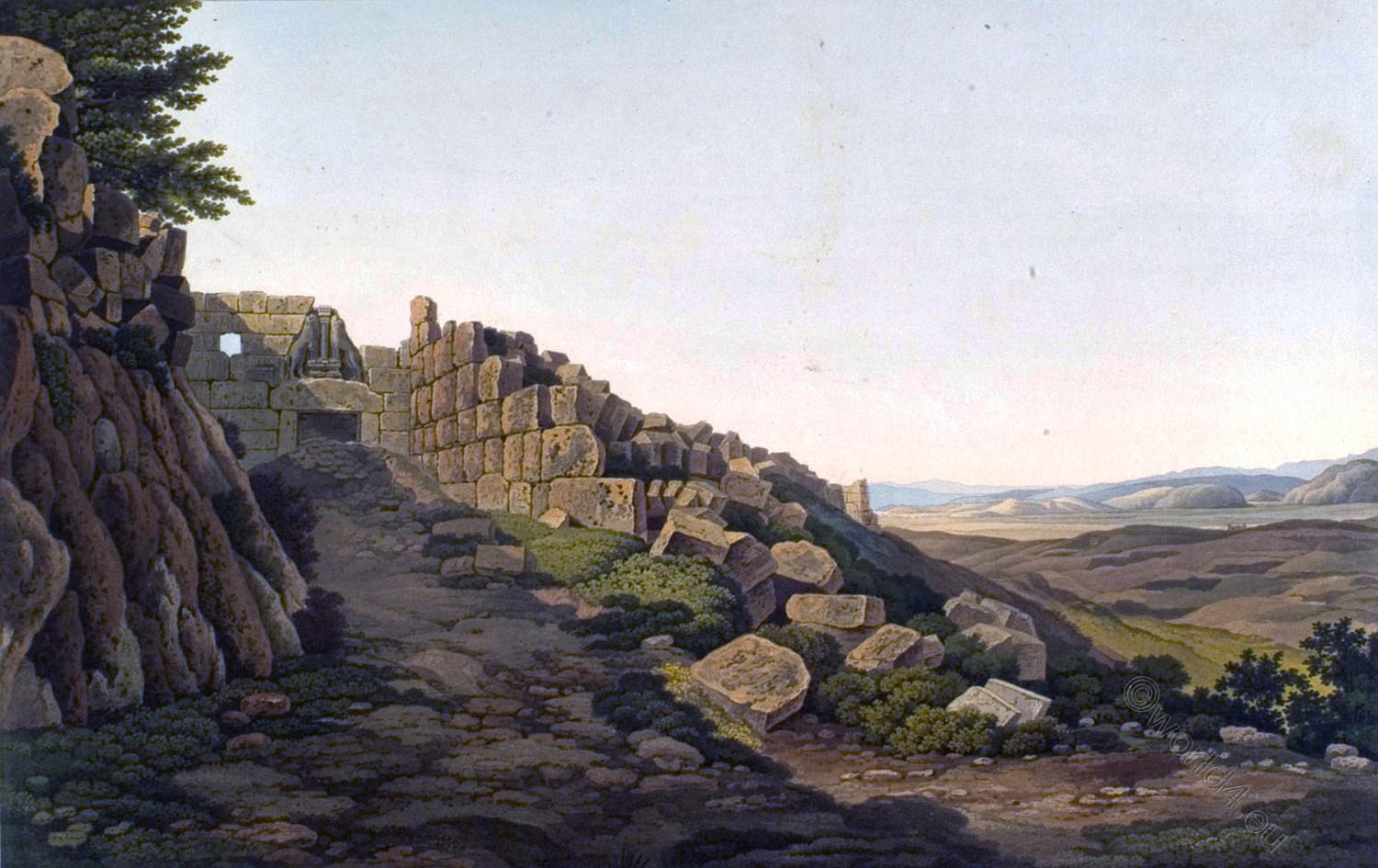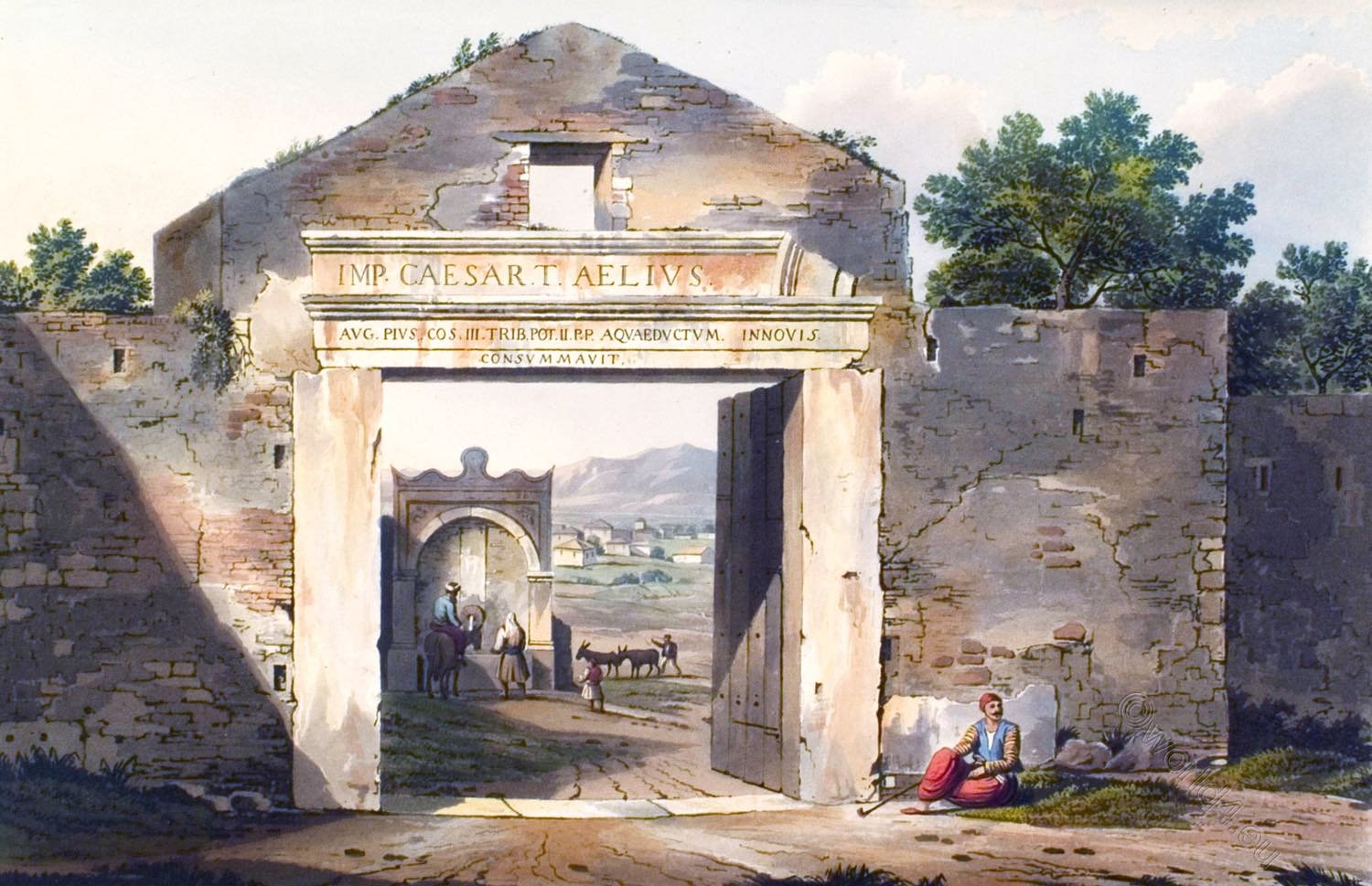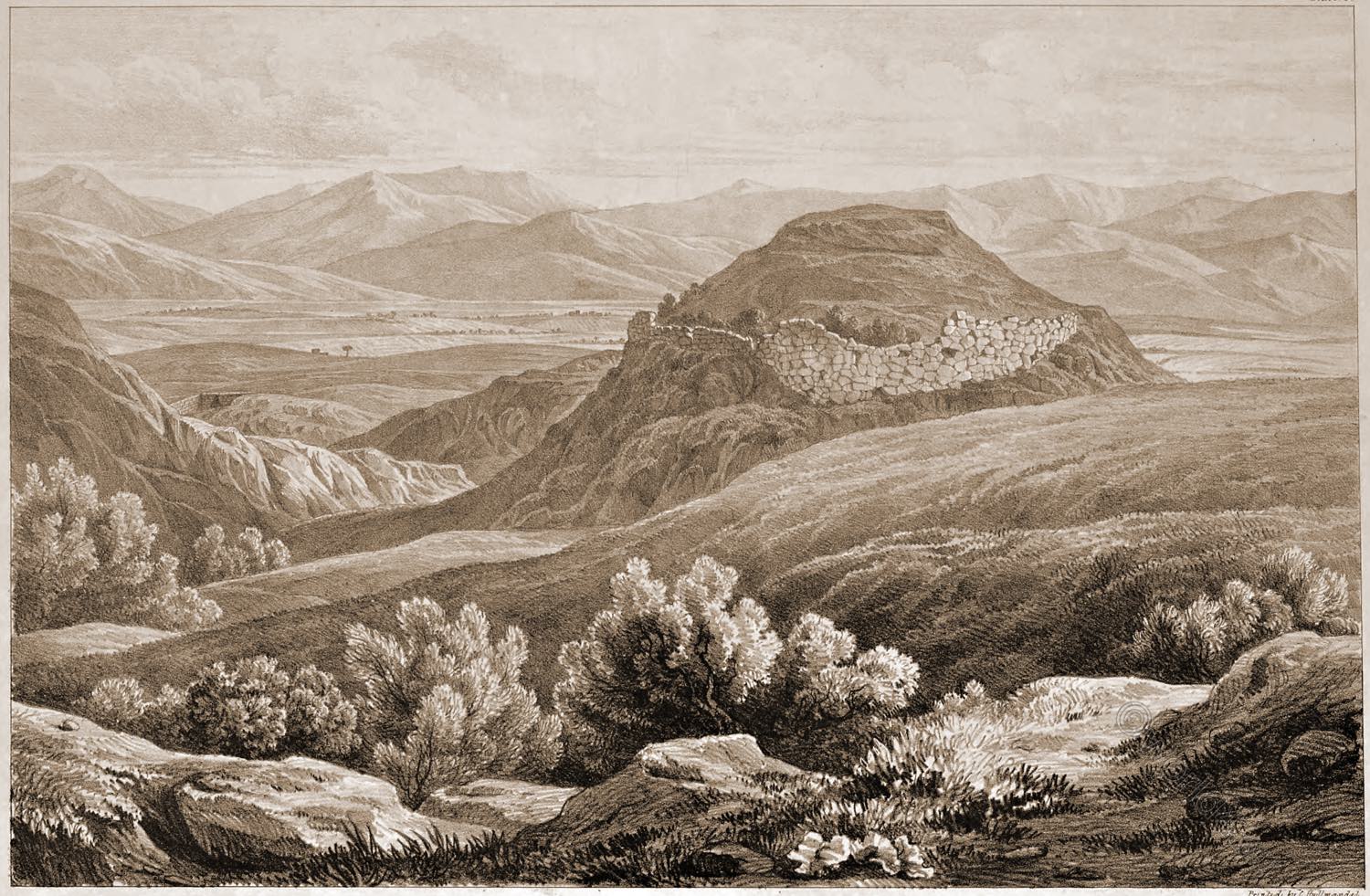The Lion’s Gate is the main gate of the ancient city of Mycenae and is located in the northwest of the fortified complex. It leads to the so-called great ramp, which leads further up through the city to the palace (Megaron).
The Lion Gate dates from the middle of the 13th century BC. It received its name because of the relief with which the relief triangle above the gate was decorated. It shows two lions facing each other and a column between them. The lion relief is the oldest monumental sculpture in Europe.

THE GATE OF THE LIONS AT MYCENAE
by Edward Dodwell
THIS Gate was the principal entrance to the acropolis of Mycenae, and still remains nearly in the same state as when visited sixteen centuries since by Pausanius, who attributes its construction to the Cyclopeans.
It is approached by two parallel walls, forming a species of passage, thirty feet and a half broad, affording great advantage to the defenders, who, lining their tops, possessed considerable powers of annoying the besiegers, cooped up within the narrowed area.
The opening diminishes upwards, and over it is a triangular niche composed of large blocks. The height of the whole is not to be ascertained without excavation; the lower part being buried under an accumulation of earth and ruins.
Its width at the top is nine feet and a half. The lintel is of extraordinary dimensions, being fifteen feet and a half in length, six feet eight inches in breadth, and four in height. The walls are of a hard breccia, excavated near the spot. The block of the Lions is of a compact limestone, of a green hue, resembling in appearance the green basalt of Egypt.
This piece of sculpture is probably the most ancient in Greece, and represents in half relief a column between two Egyptian lions, their hinder feet resting on the lower part of the block over the lintel of the gate, and their front feet upon the prolonged pedestal of the column. This latter has been conjectured to allude to the solar worship of the Persians, as Apollo and the sun arc pictured under a columnar form. It is also imagined by some to be emblematic of fire, and to represent a pyratheion or fire altar, of which the lions were the guardians.
The lions are sculpt in the Egyptian style, and are like those which are depicted on the most ancient Ceramic vases found in Greece. Their tails are narrow, resembling those which are seen in the oldest sculpture of Egypt, Greece, and Etruria. As their heads are destroyed, no conjecture can be formed as to the direction to winch they were turned.
The back part of the gate is also highly interesting, and exhibits two styles of construction totally differing from each other. The side towards the plain of Argos is of rough Cyclopian masonry, while the other is regularly built like the front of the gate, and the two lateral walls extending forward from it: which appear to have been a subsequent construction to the original Cyclopian.
Source: Views in Greece. Drawings by Edward Dodwell. Rod Well and Martin, London, 1821.
- Images and perceptions of the Lion Gate relief at Mycenae during the 19th century, by Fritz Blakolmer.
- “Making the Lion Gate Relief at Mycenae: Tool Marks and Foreign Influence” American Journal of Archaeology 118.3, 451-488, 2014 by Nicholas Blackwell.
- A Comparative Study of Hittite and Mycenaean Fortification Architecture, by Ç. Maner. 2012.
Continuing
Discover more from World4 Costume Culture History
Subscribe to get the latest posts sent to your email.






